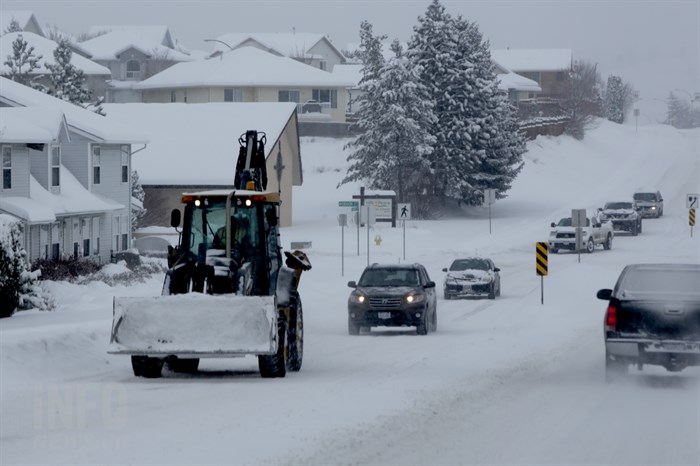
(JENNIFER STAHN / iNFOnews.ca)
December 31, 2015 - 2:30 PM
THOMPSON-OKANAGAN - The year began with a snow storm and ended with a heavy snowfall, but Mother Nature had a whole lot of other stuff going on in between this year as we dealt with both extreme heat and deluges of rain.
JANUARY
The month kicked of with a near-record amount of snow over a two-day period, basically shutting down much of the region and even forcing snow days for students who were ready to go back to school after the winter break.
By the end of the month we were nearing records again, this time for high temperatures, which led to foggy weather and increased avalanche risk throughout the region.
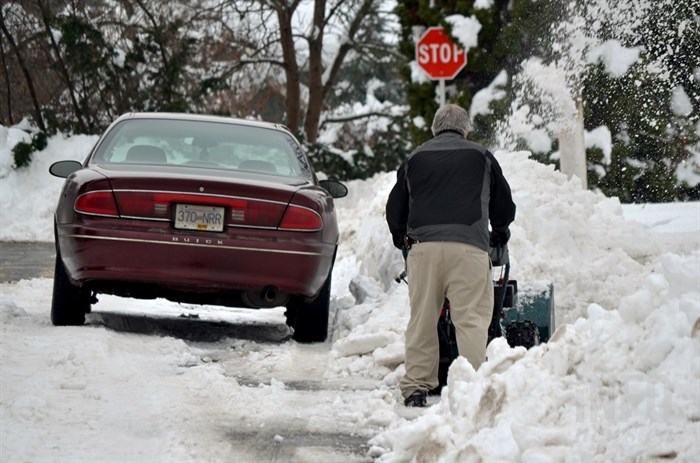
(CHARLOTTE HELSTON / iNFOnews.ca)
FEBRUARY
February began with snow and freezing rain, though within the first week records fell as temperatures continued to warm up throughout the region, a trend that lasted for nearly three weeks. The early melt led to concerns about local flooding
MARCH
March also started with temperatures above seasonal normals, with more weather records set throughout the region. The weather quickly turned wet and windy by mid-month though as winter roared back to life. Spring break wasn’t all bad though, by the end of the month temperatures were back into record-breaking range.
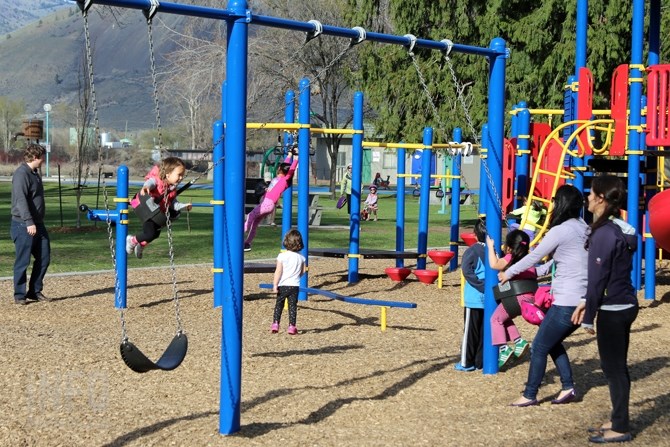
(JENNIFER STAHN / iNFOnews.ca)
APRIL
Mother Nature enjoyed her own version of April Fool’s Day, offering up a dump of snow and rain along with thunderstorms to start the month. Mid-month the snow continued to fall at higher elevations as highways crews worked to keep up with the 30 centimetres that feel in some areas overnight .
MAY
By May some officials were already warning of possible watering restrictions due to low snowpack levels.
Once again by mid-month we were close to setting new record highs and then on May 23 a storm hit the region, causing a flash flood in Cache Creek. The community was inundated with water and the community was overrun by the creek that runs through town.
The storms that ran through the province also brought lots of lightning in May, with strikes recorded up 500 per cent above normal for the month.
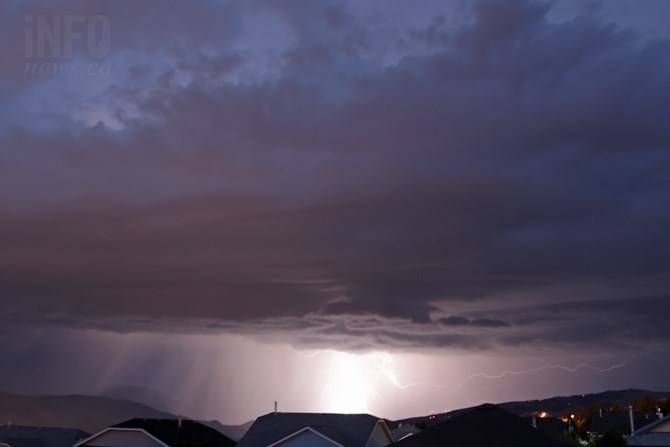
(JENNIFER STAHN / iNFOnews.ca)
JUNE
Unlike other months June kicked off with cool weather, though it wasn’t long before record heat and rain was on the way. By the end of the month a heat wave had begun, with temperatures breaking multiple records.
The first big fire of the wildfire season sprung up in June. The Cisco Road fire near Lytton was first discovered mid-month and burned through much of the season. More than 2,100 hectares burned in that fire. A number of smaller fires popped up later in the month.
JULY
The heat continued into July with more records set in Kamloops and throughout the Okanagan, The month kicked off with a campfire ban coming into effect and a flash flood in Kamloops.
With the heat also came smoky skies, as wildfires began in earnest across the province, north of us and south of us. More evacuations came as fires popped up in the Joe Rich area of Kelowna, Ashcroft, Bear Creek, Falkland, Westside Road and in the South Okanagan. The Westside Road fire gained national attention when then Prime Minister Stephen Harper stopped by the scene to meet with firefighters.
Kamloops put a smoking ban in place and communities started promising to fine people who toss their butts while the province promised to review penalties for people who spark wildfires as well.
July also brought the first wave of watering and fishing restrictions as the region grappled with drought conditions.
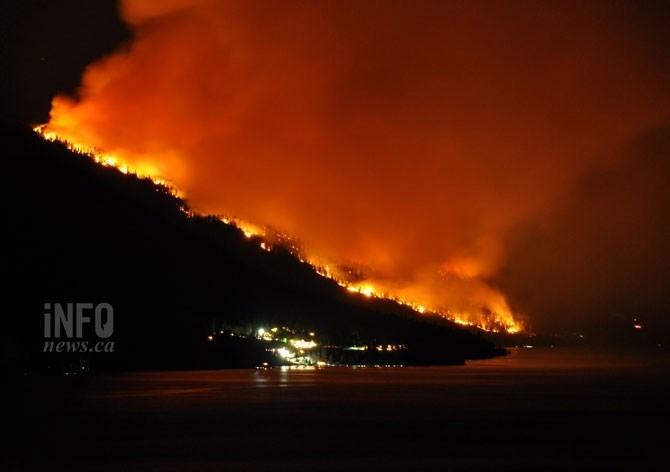
Westside Road fire from Clifton Road in Kelowna.
(MARSHALL JONES / iNFOnews.ca)
AUGUST
Once again heat greeted the beginning of the month, with records set across the Okanagan. By the end of the month temperatures had cooled significantly, which helped fire crews battle any remaining fires in the region, though several lightning storms kept them busy with small pop-up fires mid-month.
Mid-month a pair of fires also broke out in near Oliver and another in Rock Creek which destroyed nearly 30 homes.
SEPTEMBER
The campfire ban was lifted in time for the September long weekend and ski hills were reporting their first snowfalls the first weekend of September. A week in temperatures started to heat up again, with near-record heat throughout the region. Snow was reported on the Okanagan Connector mid-month as lower elevations dealt with rainy conditions and by week three Environment Canada was calling for a risk of frost.
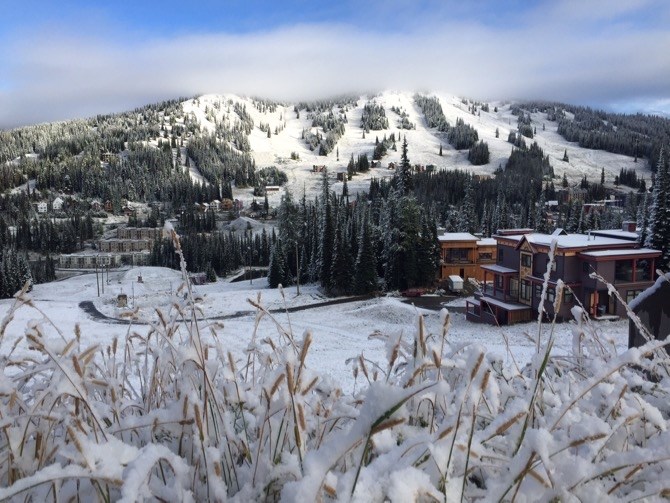
Image Credit: Silver Star
OCTOBER
Cooler temperatures and perfect sweater weather came at the beginning of October, along with bits of snow at higher elevations. By the end of the month we were once again looking at a cool and wet Halloween.
NOVEMBER
Highway passes were covered in snow at the start of the month and within a few days the first snow was falling at the higher elevations in Kamloops.
Storms and heavy snow began to hit Southern Interior highways regularly as avalanche risk increased throughout the region. A strong windstorm hit the Okanagan Nov. 17, causing major damage in some areas.
By the end of the month we were dealing with a cold snap that let us know winter was definitely on the way.

(MARSHALL JONES / iNFOnews.ca)
DECEMBER
Heavy snow continued early in the month, but was accompanied by warmer weather. Snowfall warnings were issued for highways and avalanche control shut down the Trans-Canada Highway early in the month.
Mid-month temperatures finally cooled back down to seasonal normals as the region prepared for a white Christmas. Just after Christmas a dump of snow fell on the region as the white stuff fell for a couple of days before slowing down.
To contact a reporter for this story, email Jennifer Stahn at jstahn@infonews.ca or call 250-819-3723. To contact an editor, email mjones@infonews.ca or call 250-718-2724.
News from © iNFOnews, 2015